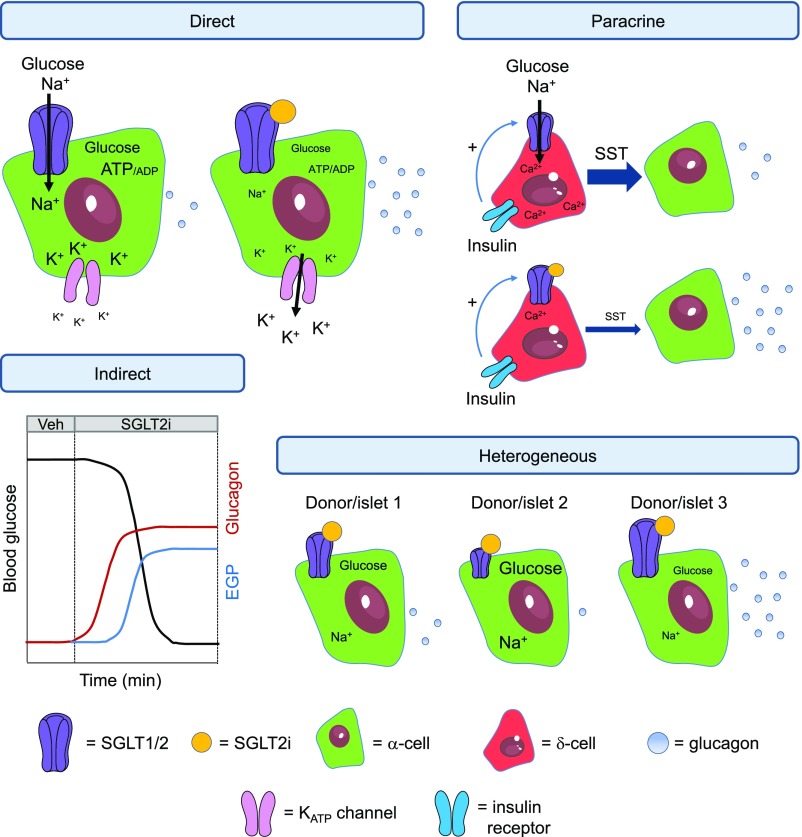Figure 1.
Schematic showing effects of SGLT2i on α-cell function. SGLT2i have been proposed to influence glucagon release through direct, paracrine, and indirect effects. Direct: Binding of SGLT2i might alter intracellular glucose and Na+ concentration, leading to changes in α-cell metabolism and membrane potential. Glucagon is decreased through poorly defined and complex mechanisms involving α-cell repolarization. Paracrine: Insulin binds to the insulin receptor on δ-cells to increase SGLT1/2 activity, leading to Ca2+ release from intracellular stores and stimulation of somatostatin release, which tonically inhibits glucagon secretion. SGLT2i block this effect by binding to either SGLT1 or SGLT2 on the δ-cell membrane, decreasing somatostatin secretion and releasing α-cells from tonic inhibition (but note that Saponaro et al. [11] did not detect presence of SGLT2 in δ-cells, unlike what has been reported by others [4]). Indirect: SGLT2i stimulate glycosuria, which lowers blood glucose levels. α-Cells respond to hypoglycemia by releasing glucagon, which increases endogenous glucose production. Heterogeneous: SGLT2/SLC5A2 expression is highly variable between donors and even islets of the same individuals. Some individuals/islets respond to SGLT2i, whereas others are less responsive, unresponsive, or even inhibited. If studies are underpowered, and depending on the samples examined (i.e., responsive, nonresponsive, or inhibited), effects of SGLT2i are likely to be reported as either: 1) positive, 2) negative, or 3) absent. EGP, endogenous glucose production; KATP channel, ATP-sensitive potassium channel; SST, somatostatin; Veh, vehicle. Adapted from Servier Medical Art under a CC BY3.0 license (https://creativecommons.org/licenses/by/3.0/).

